Make raw milk yogurt at home using an Instant Pot, a dehydrator, a proofing box, or an oven. All the benefits of raw milk are preserved in this easy, cold-start yogurt recipe.
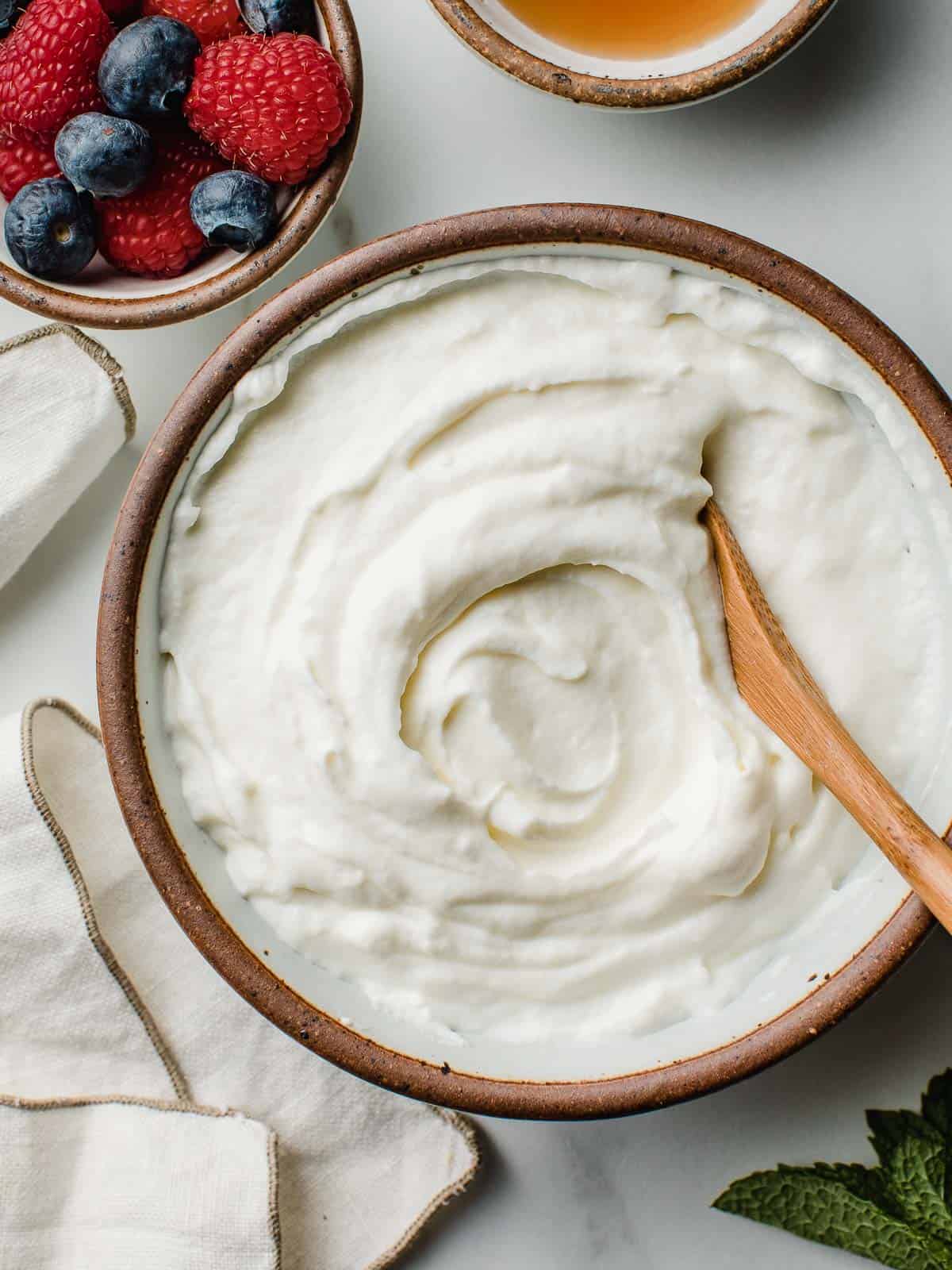
There are many ways to make yogurt at home without a yogurt maker.
All you need is milk, a small amount of yogurt containing active live cultures like lactobacillus, and a way to keep it at a warm temperature for 8-24 hours in order for it to culture and thicken.
If you have an Instant Pot, mix the milk and yogurt inside of the liner, press a button, and let it do its job. 8-24 hours later you’ve got yogurt!
A dough-proofing box, a dehydrator, or an oven that can be set at a steady temperature of 110°F, for up to 24 hours, work great too.
The only difference is that you’ll need glass mason jars to hold the yogurt as it cultures. Once the yogurt is done, simply transfer the jars straight to the fridge.
I use fresh raw milk to make homemade yogurt because of its health benefits. Raw milk hasn’t been heated or treated with any chemicals.
I am fortunate enough to pick up milk that was milked from the cow the same morning. It doesn’t get any fresher than that!
If you don’t have access to raw milk, feel free to use store-bought pasteurized milk, organic milk, goat’s milk, or sheep’s milk. The culturing process will help to restore some of the enzymes lost through the pasteurization process.
Enjoy raw milk yogurt plain or add it to a blender with fresh fruit, honey, or maple syrup for a probiotic smoothie.
Other homemade pantry recipes: homemade butter / sourdough starter / pesto / bone broth / vanilla extract / pizza sauce
Jump to:
What is raw milk yogurt?
Raw milk yogurt is made with milk that has not been pasteurized. It has a thin, pourable consistency that is similar to kefir.
The flavor and texture are determined by the fat content of the milk and the starter culture used to innoculate the yogurt.
Although the yogurt is thin, it can be strained into a thick Greek-style yogurt or even raw yogurt cheese, similar to cream cheese.
Raw milk yogurt is full of vitamins, minerals, good bacteria, beneficial enzymes, and several strains of probiotics which help to maintain well-balanced gut health.
These numerous bioactive components kill pathogens in the milk, prevent pathogen absorption through the intestinal wall, and help to strengthen the immune system.
It literally has its own built-in safety system which makes raw milk yogurt safe to eat.
When milk is pasteurized, these qualities are destroyed. Pasteurization also denatures the proteins in milk making them "sticky".
Is raw milk yogurt good for digestion?
Just like when you sprout a grain or seed, the fermentation of raw milk produces many beneficial qualities.
The process of fermentation breaks down the casein in the milk which is one of the hardest proteins for humans to digest.
It also helps to predigest lactose, the sugar in milk that so many people are sensitive to.
Lactase is the enzyme that helps digest lactose and makes it possible to tolerate fermented milk products. Lactase turns lactose into lactic acid.
The more lactic acid in the yogurt, the tangier it will taste. The fermentation process breaks down 30-40% of the lactose content.
Other enzymes are restored to help with the absorption of calcium and other minerals the body needs.
When you eat yogurt on a regular basis, you are providing your digestive tract with beneficial bacteria and lactic acid.
They are wonderful at keeping pathogens in check and aid in the fullest digestion possible when consumed alone or with other foods.
Yogurt fermented for 24 hours is acceptable for anyone on a gut healing protocol such as the GAPS diet.
Ingredients needed
- One gallon of raw milk (or organic pasteurized milk, goat's milk, or sheep's milk)
- 1 cup plain yogurt (preferably organic)
Plain yogurt, referred to as a yogurt starter culture, is the source of the bacteria that inoculates the milk.
Some people find it more convenient to use a yogurt starter culture (affiliate link) for consistent results but I've never had issues using organic store-bought yogurt.
NOTE: After you have your first batch of yogurt, always save one cup of yogurt to inoculate the next batch. If you forget, simply use organic plain yogurt from the store.
Equipment needed
(Amazon affiliate links) - Check out my favorite kitchen essentials.
- 6-quart Instant Pot or larger, dough-proofing box, dehydrator, OR an oven that can be set to 110°F (43.3°C)
- whisk
- measuring cup
- half gallon mason jars
- quart-sized mason jars
- mesh strainer
- large bowl
- tea towel
Can I make this recipe with pasteurized milk?
Making yogurt with raw milk will produce the highest level of enzymes within the yogurt, but if raw milk is not available, be assured that you will still benefit by using pasteurized milk when making this cold-start homemade yogurt.
Fermenting, or culturing milk can help to restore the enzymes, such as lactase, that are lost during the pasteurization process of yogurt.
Step-by-step instructions
Yogurt is made by heating the milk with a yogurt culture and then left to sit at a warm temperature to help the bacteria grow and cultivate.
Raw milk yogurt needs to ferment for a minimum of 8 hours, up to 24 hours, at 110°F (43.3°C).
The longer the yogurt is allowed to culture, the more lactose is reduced and the thicker it will be. (I find that the 20-hour mark is my sweet spot.)
"The temperature must be 108°F to 112°F for yogurt bacteria to grow properly. Too high a temperature inactivates bacteria; too low a temperature prohibits growth." - Washington State University Extension
Instant Pot Instructions without a yogurt button
- Clean the stainless steel insert of the Instant Pot, the lid, and the sealing ring with hot soapy water before starting.
- Pour one gallon of milk into the liner along with 1 cup of full-fat plain yogurt. Use a whisk to disperse the yogurt and cream throughout the milk.
- Place the lid on the Instant Pot and press the SOUS VIDE button. Set the timer to a minimum of 8 hours up to 24 hours. Set the temperature to 110°F (43.3°C).
- Transfer the finished yogurt to glass containers and place them in the fridge for 24 hours to set.
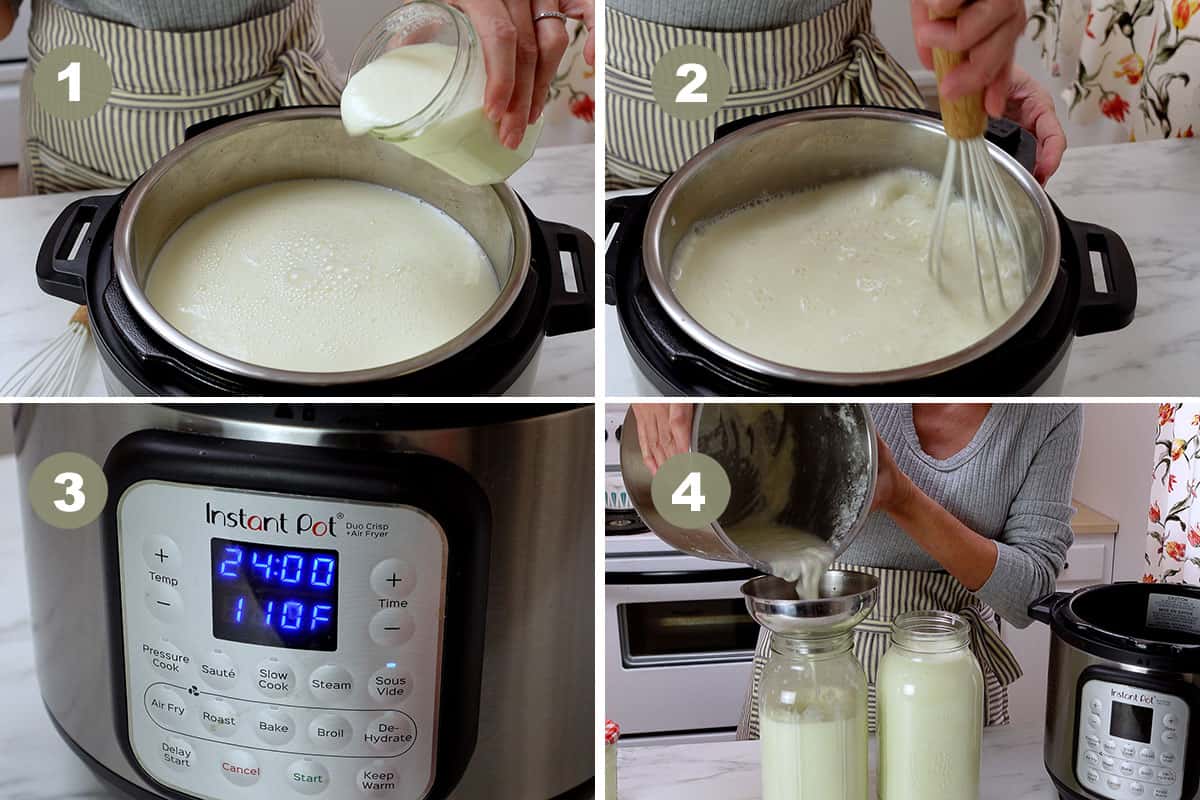
The YOGURT setting on an Instant Pot has two modes, the BOIL mode, and the INCUBATE mode. Press the YOGURT button until you see a timer to activate the INCUBATE mode. Set the timer to 24 hours.
Dehydrator, proofing box, oven instructions
- Whisk together one cup of yogurt and 2 cups of milk in a bowl.
- Split the mixture evenly into 4 quart-sized mason jars and top the jars with the remaining milk.
- Screw lids onto each of the jars and shake.
- Place the jars into the chosen equipment.
- Set the temperature to 110°F (43.3·C) and allow the milk to culture for a minimum of 8 hours up to 24 hours.
- Transfer the jars to the fridge for 24 hours for the yogurt to set.
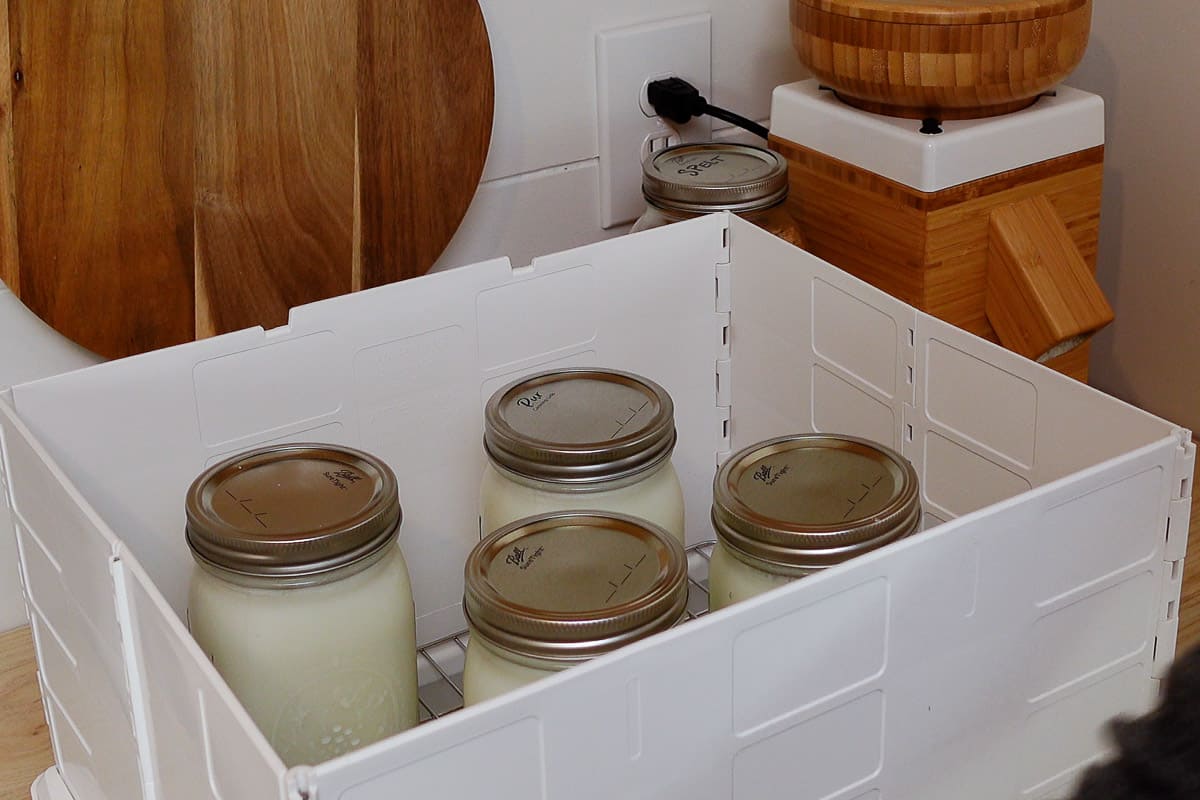
Raw milk yogurt should have a pleasant smell and taste for a minimum of 12-14 days or even longer when kept in the refrigerator.
How to make raw greek yogurt
To make raw greek yogurt, you will need the strain the whey. The longer the yogurt is strained, the thicker the greek yogurt will be.
I find it's easiest to strain a quart, up to a half gallon of yogurt at a time.
- Place a fine mesh strainer over a bowl. Line the strainer with a clean tea towel or several layers of cheesecloth.
- Pour a portion of the yogurt into the towel-lined strainer and cover it with a lid or a large plate.
- Transfer the bowl to the fridge for several hours or until the yogurt is at the desired thickness.
- Scoop the thickened greek yogurt into a small container with a lid and store it in the refrigerator.
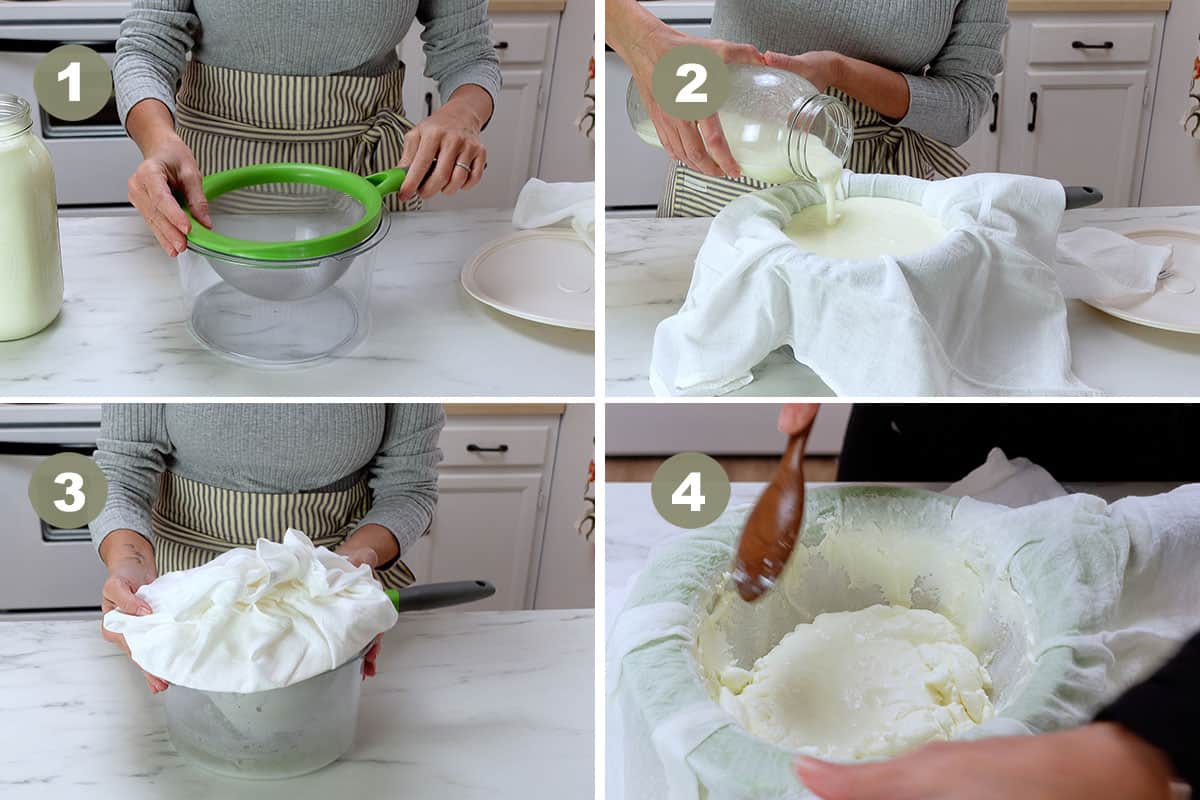
Transfer the liquid, or whey in the bottom of the bowl to a separate container with a lid and store it in the fridge to use with other recipes.
Best uses for whey
A handy and beneficial byproduct of yogurt is sweet whey. It is the liquid that separates from the yogurt.
Whey is full of minerals and just one tablespoon of water can help in digestion with a meal.
Whey from cultured milk is invaluable when making fermented vegetables such as:
- sauerkraut
- soaking oats
- soaking legumes
- fermented beverages
- fermenting chicken feed
- replace the water in recipes
- smoothies
- water plants
Common questions
Visit the website RawMilkFinder.com and search for a farmer in your area that participates in herdshares. You can also find information about the raw milk laws in your state by visiting ProCon.org.
Pasteurization of milk was introduced at the time of large-scale, industrialized dairy farming to make sure the milk stayed safe for the public to consume. Pasteurization lowers the risks of milk being contaminated by harmful bacteria and pathogens. As more and more people moved away from rural areas and into large cities, the demand for pasteurized milk grew.
Small dairy farmers that participate in herdshares typically have a very small number of dairy cows making it easy to keep sanitary milking conditions. They follow strict dairy best practices to ensure the milk does not become contaminated.
Raw milk yogurt is made through the process of lacto-fermentation. Lacto-fermentation breaks down the milk proteins and milk sugars with lactic acid-producing bacteria. Once these bacteria have produced enough lactic acid, the milk is preserved from becoming spoiled.
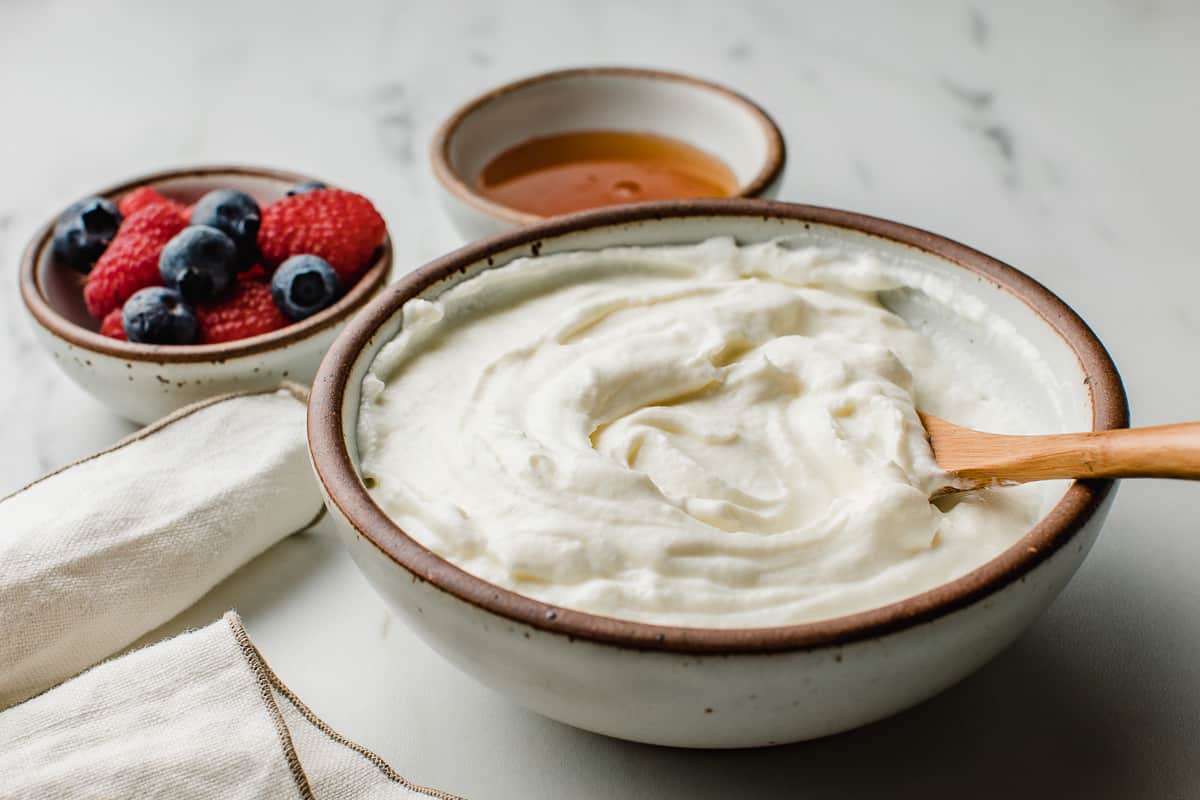
Do you like this recipe? Make sure to subscribe to our newsletter and we'll send you fresh recipes, valuable troubleshooting advice, useful tips, and other information we believe will be helpful to you!
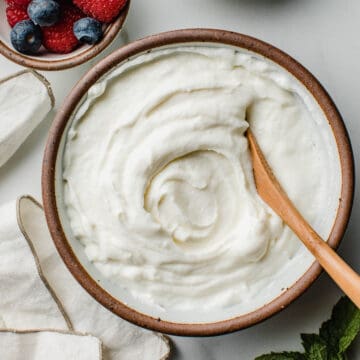
Raw Milk Yogurt
INGREDIENTS
- 1 gallon raw milk
- 1 cup full-fat plain yogurt (preferably organic)
INSTRUCTIONS
Instant Pot instructions
- Clean the stainless steel insert of the Instant Pot, the lid, and the sealing ring with hot soapy water before starting.
- Pour one gallon of milk into the liner along with 1 cup of full-fat plain yogurt. Use a whisk to disperse the yogurt and cream throughout the milk. Place the lid on the Instant Pot and press the SOUS VIDE button. Set the timer to 24 hours and the temperature to 110°F (43.3°C). (OR, press the YOGURT button twice and set the timer to 24 hours.)
- When the time is up, remove the lid and give the yogurt a stir. Transfer 1 cup to a small jar to inoculate the next batch. Transfer the remaining yogurt to glass containers and place it in the fridge for 24 hours to set.
Dehydrator, proofing box, oven instructions
- Whisk together one cup of yogurt and 2 cups of milk in a bowl. Split the mixture evenly into jars and top the jars with the remaining milk. Screw lids onto each of the jars and shake. Place the jars into the chosen equipment. Set the temperature to 110°F (43.3·C) and allow the milk to culture for a minimum of 8 hours up to 24 hours. Transfer the jars to the fridge for 24 hours for the yogurt to set.
How to make raw greek yogurt
- Place a fine mesh strainer over a large bowl. Line the strainer with a clean, thin tea towel or several layers of cheesecloth. Pour a portion of the yogurt into the towel-lined strainer and cover it with a lid or a large plate. Transfer the bowl to the fridge for several hours or until the yogurt is at the desired thickness.
- Scoop the yogurt into a small container with a lid and store it in the refrigerator. Transfer the whey located in the bottom of the bowl to a separate container with a lid and store it in the fridge.



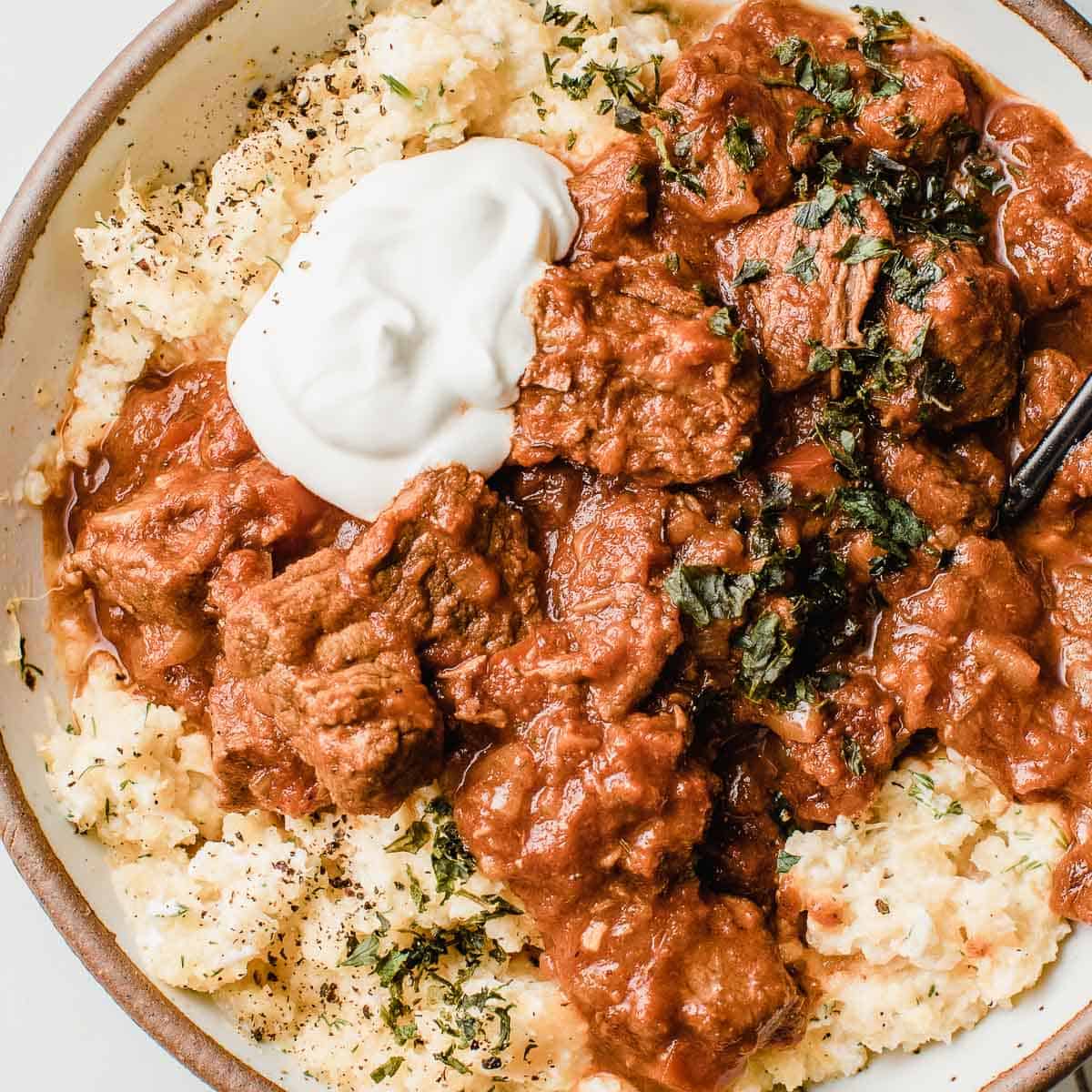
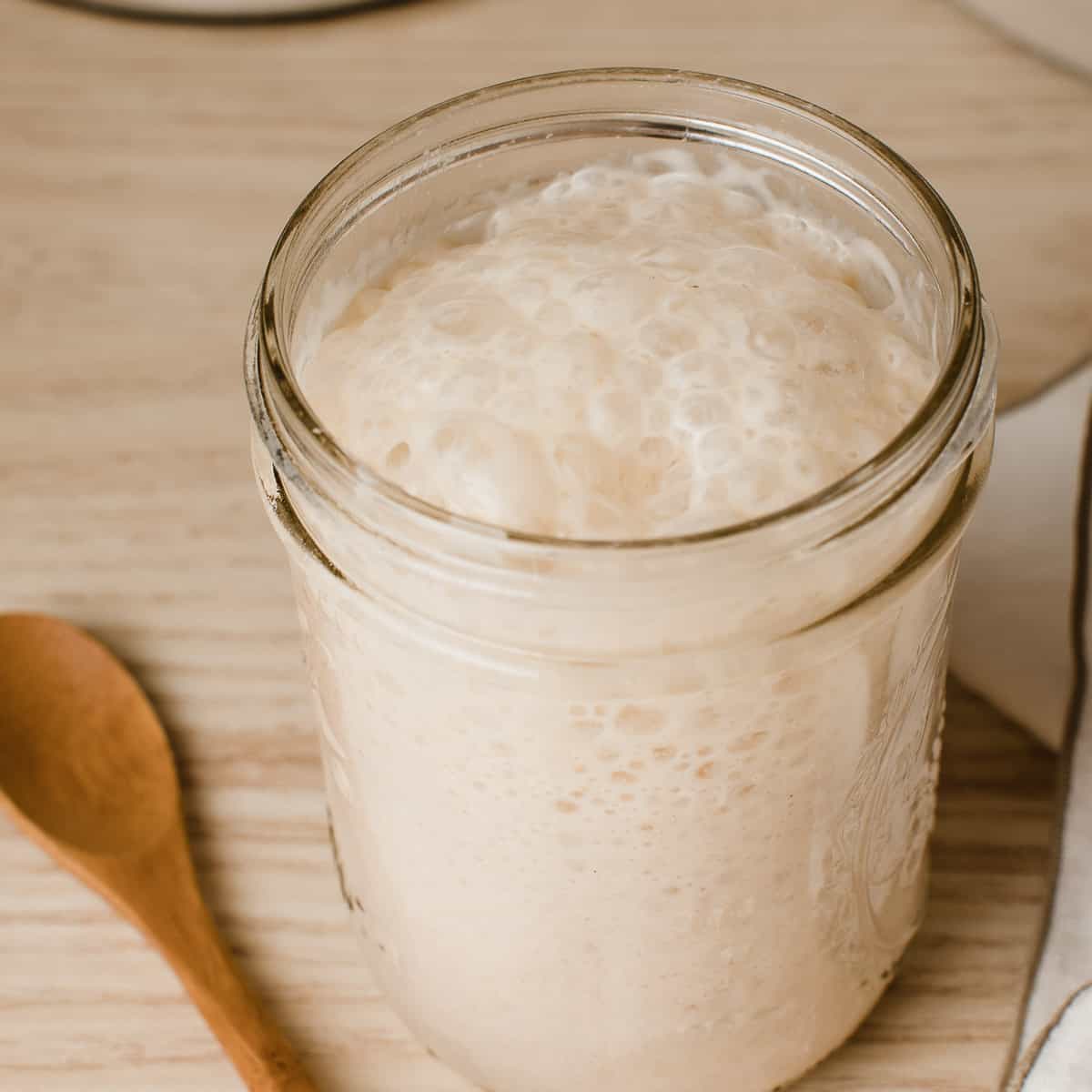
Rhonda says
I did half the recipe and in 24 hours it is very liquidity. Not sure what I did wrong. I used raw goat milk and greek goat yogurt. All organic.
Jessica says
When you say to take a cup of your instant pot yogurt to store for the next back, does that cup going into the fridge? How long does it last?
Amy says
Yes it goes in the fridge and can be kept for up to two weeks.
warren frost says
When I make yogurt with unpasteurized raw milk the yogurt has a bitter taste and bad odour.After sitting in frig for 1 week this odour and taste disappear.Did bad bacteria/enzymes in raw milk cause problem.I have tried using a mother batch and boiling utensils.In the past this problem only occurred occasionaly.Pasteurising the milk 180 F for 1 hour sometimes fixes the problem.I use yogurt powder in sachets for starter.
Ana says
Hello, I put my raw milk in my dehydrator in mason jars with no lid.... Is this going to be okay? It has been 11 hours.
Thanks in advance
Amy says
Yes it should be fine!
Devon says
Great instructions for Greek yogurt. I found a source for raw milk and I'm looking forward to using this recipe a LOT! I'm wondering, how many times do you typically use a cup of your yogurt as a starter?
Laura says
Thank you for sharing Amy. 😊 This recipe was very helpful. I’m glad to know you can make kefir using raw milk without heating the milk first. It turned out great!
Erin says
How long is it good for? should we eat it within a week?
Amy says
It can be stored in the fridge for up to 2 weeks.
Alyssa says
Have you ever added gelatin to thicken?
Amy says
You can add 2 tablespoons of gelatin along with 1 cup of the raw milk to the pot and stir until combined. Then add the remaining raw milk, stir and proceed with the directions.
Alissa says
I just made this, so easy! But I am curious, do you skim the cream first? My cream and yogurt have separated and am not sure what to do now. Do I mix them together or can I use the cream? thank you!
Amy says
Hi Alissa! I do not skim the cream but you can if you wish. My cream and yogurt separate but I just stir it back together before I transfer the yogurt to jars. Some people choose to skim the cream off after the yogurt is done and use it to make cultured butter.
Emily says
Hey do you have any tips for doing stove top? I don't have any special equipment, and my oven doesn't go down that low... I read somewhere that I could put it in jars in a cooler with hot water??
Amy says
Hi Emily, I don't have experience making this on the stovetop. I did find this recipe if you'd like to check it out!
Gina says
I use a Dutch oven, heat the milk to 110 and then take out a cup and mix it with the yogurt. Add that back to the Dutch oven and then put in the oven (turned off but with the light on) to culture. Stays at that same temperature pretty well.
Amy says
Thank you for sharing Gina! 🙂
Kristin says
Can I use soured raw milk for this, or does it have to be fresh?
Amy says
Yes you can.